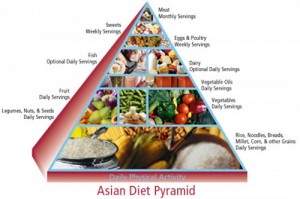Juvenile Diabetes Diet
Proper management of type 1 diabetes requires maintaining a healthy diet designed to ensure proper nutrition while monitoring the intake of fat, protein, and carbohydrates. However, it is essential to understand that there is no single universal type 1 diabetes diet. Proper management of the condition involves being mindful of what and how you eat and how the body responds to certain foods.
Why Should you Follow a Juvenile Diabetes Diet?
Although there’s no universal diet for juvenile diabetes, people with the condition need to monitor their blood glucose levels closely. Without insulin therapy, proper diet, and exercise, a person with juvenile diabetes could experience serious health complications. Some of the common complications associated with unmanaged type juvenile diabetes include:
- High blood pressure and increased risk for stroke, poor blood circulation, and heart attack
- Skin sores can be infected causing pain and tissue death
- Vision problems
- Nerve damage
- Kidney damage
Following the proper type 1 diabetes dietary guidelines can mitigate the complications associated with the condition and improve the overall quality of life.
Read about the Obesity Epidemic associated with Juvenile Diabetes HERE!
How Can you Prepare for a Juvenile Diabetes Diet?

It might seem easy to reach for processed foods and fast foods especially when you’re short on money or time, but it’s essential to keep in mind that these foods are high in salt, sugar, and fat, and they offer minimal nutrients.
Grocery shopping regularly and planning meals ahead can help reduce “emergency eating” which is usually “unhealthy eating”.
Stocking your kitchen well with healthy foodstuffs can also help reduce your intake of unhealthy sugar, sodium, fat, sodium, and carbohydrates that can spike blood glucose.
One of the most important aspects of a healthy juvenile diabetes diet is consistency. You can maintain consistent blood sugar levels by:
- Eating around the same time every day
- Avoiding skipping meals
- Paying keen attention to food labels
Starting a Diabetes Diet

Choosing nutritious foods high in minerals and vitamins is optimal. It is generally recommended that you choose nutrient-dense carbohydrates, healthy proteins, and fats.
In case you’re having any problems managing juvenile diabetes, work with your dietitian or doctor to help manage your timing of meals and medications. It is also important to discuss the portions of carbohydrates per meal that are appropriate according to your specific condition and needs.
Here are some recommendations:
-
Carbohydrates
The three main types of carbs are sugar, starches, and fiber, which can come in form of bread, pasta, fruits, beans, or starchy vegetables. Carbohydrates are converted into sugar in the digestive tract before being absorbed into the bloodstream hence raising your blood sugar level.
Therefore, it is important for people with juvenile diabetes to manage their carbohydrate intake. If your blood sugar levels are low, choose fast-acting carbohydrates that will be easily digested and then absorbed into your bloodstream.
Start with 15g of carbohydrates then recheck your blood glucose and have another 15g if the level is still low.

Fast-acting carbs (15 grams) include:
- 4-6 crackers
- ¼ cup of fresh fruit juice
- 4 ounces of fresh fruit (1 small fresh fruit)
- 1 tsp of honey
- 2 tsps of raisins
-
Fruits
If you are using a juvenile diabetes diet plan, fruits should be counted as carbs because they’re natural sources of sugar. You can opt for frozen or fresh fruits. However, it is important to keep in mind how many carbs are in specific portions of fruit in order to properly manage your insulin and blood sugar levels.
Examples of fruits that contain carbohydrates (portions that contain 15g of carbohydrates)
- 3 ounces of fresh/frozen grapes
- ½ cup of canned fruit
- 4 ounces of fresh fruit (1 small fresh fruit)
- 1 cup of melon or grapes
- ½ cup of fresh fruit juice
Remember, you don’t have to limit your intake to only 15g per snack or meal. However, you should note the number of carbohydrates in specific servings based on your blood glucose management plan and insulin needs.
-
Vegetables
Sugar, in form of starch, naturally occurs in a wide variety of common vegetables including peas, corn, and potatoes. However, starchy vegetables are higher in carbs compared to other vegetables and should be consumed in moderation and properly accounted for especially when calculating the carbohydrate intake of type 1 diabetes patients.
On the other hand, non-starchy veggies have a lower impact on the blood sugar level and are richer in phytochemicals, fiber, and minerals. Therefore, you can eat up to 3 cups of non-starchy vegetables per meal without having a big effect on your blood sugar levels.
More than 3 cups of non-starchy vegetables can be counted as 15g of carbohydrates and anything less than 3 cups should be considered “free”. Examples of non-starchy vegetables include:
- Onions
- Beets
- Asparagus
- Green leafy veggies
- Carrots
- Sprouts
- Peppers
- Celery
- Cucumber
- Tomatoes
- Sprouts
Always choose frozen or fresh vegetables without added sauces or salt.
Portions of starchy veggies that contain 15g of carbohydrates include:
- ½ cup of peas
- 3 ounces of baked potato
- ½ cup of squash
- ½ cup of boiled potatoes or sweet potatoes
- ½ cup of corn
-
Whole grains
These are considered fibrous and nutritious starch and it is recommended that about 50% of grains consumed should be whole. Whole-grain bread, bran cereal, and brown rice are great sources of whole grains.
Be mindful of your total intake in a single meal and read labels to ensure your blood sugar is properly regulated with the medication you are using.
-
Fats and proteins
Healthy fats are important for optimal heart and brain functioning while proteins are very important in repairing wounds and maintaining muscle. Proteins can be found in meat, eggs, and beans. Healthy fats include seeds, nuts, and avocado.
Fats and proteins don’t directly raise blood sugar levels. However, experts recommend that people with juvenile diabetes limit their intake of fatty or processed meats, which are high in sodium and saturated fat.
Although these items do not affect blood sugar directly, consuming them in high quantities can have harmful effects such as heart disease, which is a common complication of type 1 diabetes.
When Should You Eat?
Knowing when and what to eat is extremely important.
It is recommended that juvenile diabetes patients eat smaller meals while progressively snacking throughout the day in order to make their blood sugar easier to manage and monitor while preventing spikes.
A certified diabetes educator or registered dietitian and your doctor can help you calculate the insulin needed to support your carbs intake while avoiding blood sugar lows and highs.
Nuts, vegetables, and fruits travel easily and are particularly great to have on hand especially when you need them.
Physical activity and exercise lower blood sugar. Therefore, it’s important to measure blood sugar levels before and after engaging in any physical activity. This lets you know how much you have to eat in order to maintain healthy blood sugar levels.
The bottom-line
Living with juvenile diabetes or type 1 diabetes means you must be more mindful of what you eat and its impact on your body. Your nutritionist, dietitian, and a doctor can help you create a meal plan that works specifically for you.


